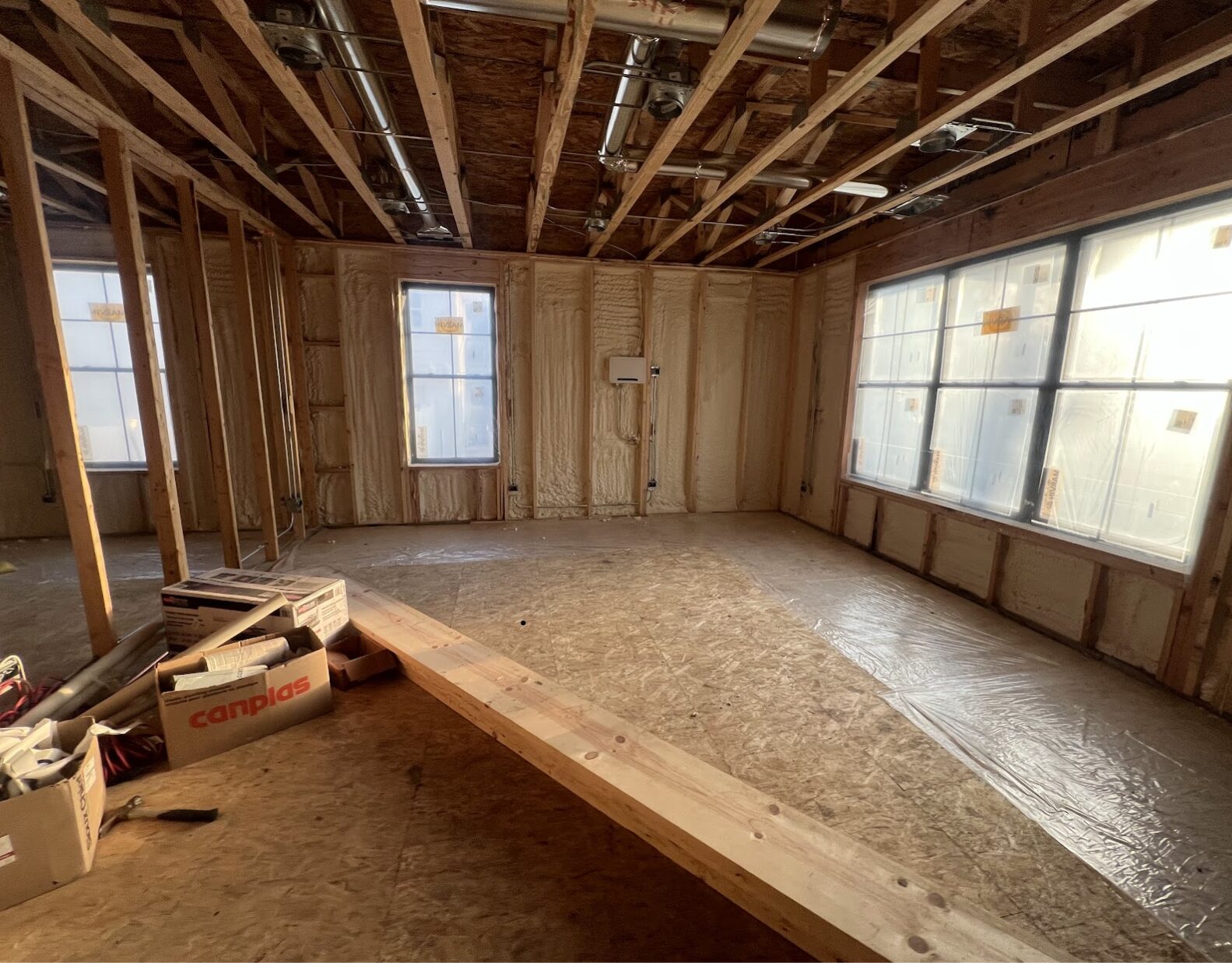If you’re planning a home addition, remodel, or new home construction, you’ve probably come across the latest energy code requirements. What was once a simple design process has now turned into a budget-busting obstacle for many homeowners. While energy efficiency is an important goal, these rigid codes often don’t align with the realities of existing homes—or your project budget.
The True Cost of Energy Code Compliance
When we sit down with clients to talk about project costs, one of the first surprises they face is how much of the budget is eaten up by energy code compliance. Why?
1. Over-Insulation Requirements
Even for small additions, current codes often require higher R-values than the rest of your older home. This creates an energy-efficient “bubble” that doesn’t reflect real-world energy use and drives up material and labor costs unnecessarily.
2. Expensive Windows and Doors
Modern codes require low U-factor or triple-pane windows and doors. While they’re energy-efficient, they can add thousands of dollars to your budget, especially when not originally part of the design.
3. Mandatory Testing and Documentation
From blower door tests to thermal inspections and certified reports, the administrative burden has grown dramatically—along with your bill. These requirements didn’t exist in most builds just a few years ago.
Real-World Examples That Break the Bank
At SG Home Builders, we’ve seen these issues affect real projects. And unfortunately these aren’t isolated cases, they’ve become the norm in today’s construction environment.
 |
New Construction R-Value Adjustment: On a recent custom home, the Building Department required exterior walls to achieve an R-30 value. With standard 2×6 walls, the only way to meet this was adding closed cell spray foam, which more than doubled the original insulation quote. A single code adjustment cost thousands and wasn’t even in the original design scope. |
| Garage Conversion to Living Space: On another project, we converted an existing garage into living space. The roof framing was 2×6 rafters, but the code demanded an R-39 insulation factor. To achieve this, we had to furr down the rafters and add spray foam insulation, adding unexpected material and labor costs that ballooned the budget. |  |
Does It Really Make Sense?
Yes, building a highly insulated, airtight home is beneficial in a vacuum. But when you’re attaching a new addition to an older structure, these stringent requirements often force you to over-invest in one small part of your house while ignoring the bigger picture. The result? A bloated budget with minimal practical impact on overall efficiency.
How This Impacts Your Project
We’ve seen budget overruns of 10–20% directly tied to energy code requirements alone. Homeowners come in excited to build a new master suite or open-concept kitchen, only to face sticker shock when we add the line items for high-performance insulation, triple-pane windows, and specialized air-sealing measures that weren’t in the original vision.
And the worst part? These upgrades are mandatory. Even if you don’t care about ultra-efficient insulation in your new sunroom, the code doesn’t give you a choice.
What You Can Do to Stay Ahead of the Energy Code
While we can’t change the energy code, there are ways to plan smarter and minimize budget pain.
-
Start with code in mind. Don’t wait until the permit phase—understand your obligations during design.
-
Simplify your layout. The right design choices can help reduce or eliminate expensive compliance requirements.
-
Work with a pro. At SG Home Builders, we’ve helped dozens of Chicagoland homeowners navigate these rules efficiently.
The Bottom Line
Energy efficiency is important, but when energy codes are applied without context, they can turn an exciting project into a budget nightmare. The key is partnering with a builder who understands how to integrate these requirements without letting them derail your vision.
If you’re considering an addition or remodel, let’s talk early—before the energy code blows your budget apart.
Thinking About Building?
Don’t let hidden costs sneak up on you. Today’s energy code requirements can derail your project budget if you don’t plan ahead. That’s why it’s critical to talk to an experienced builder early in the process—before design decisions are finalized and permits are submitted.
At SG Home Builders, we specialize in designing and building custom homes, home additions, and remodels that balance energy code compliance with cost-efficiency and client vision. We know how to navigate the complex code landscape in Illinois and beyond—helping you avoid costly mistakes and keep your project on track.
Let’s talk now, so the energy code doesn’t blow your budget later.
Contact SG Home Builders today to schedule a consultation. Let’s build smarter, together.





